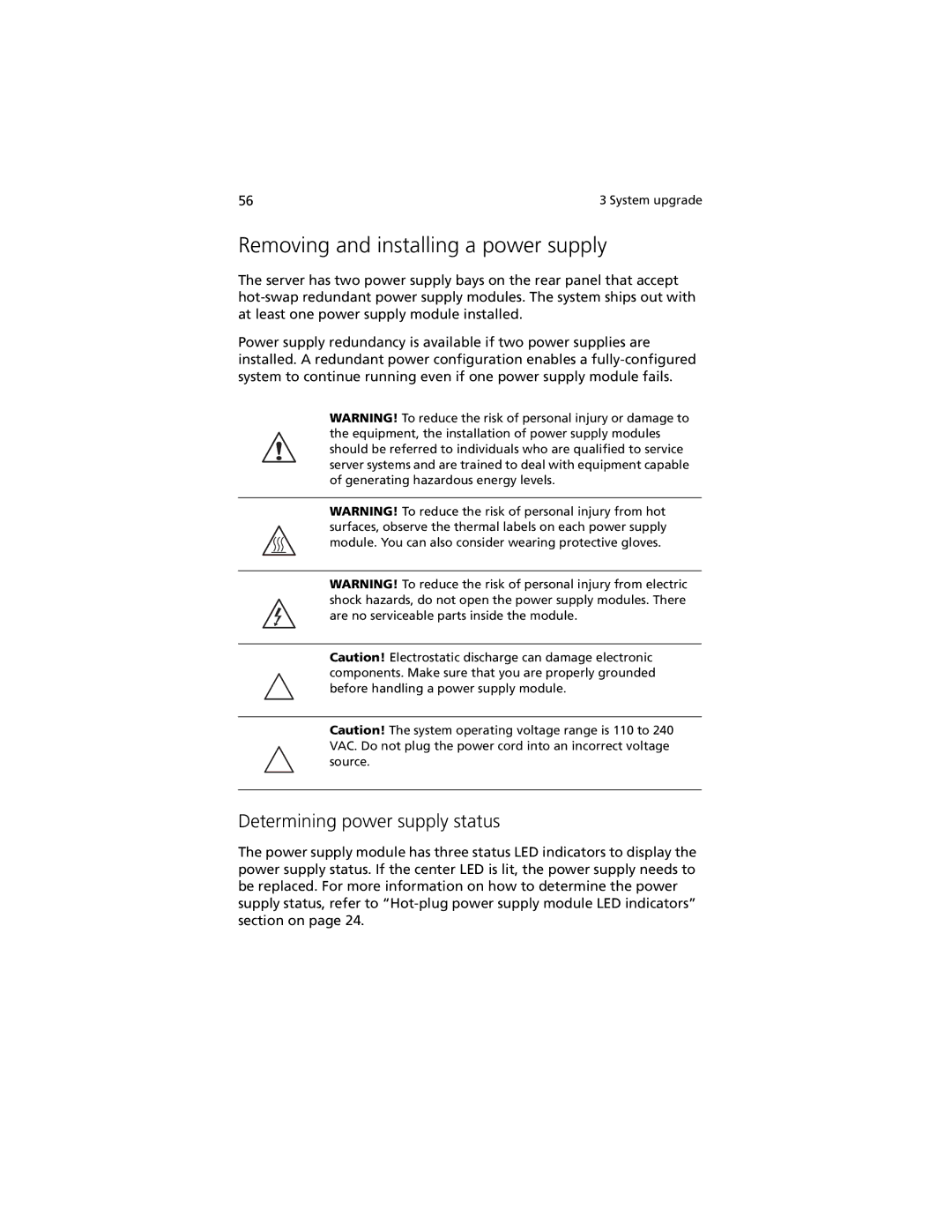
56 | 3 System upgrade |
Removing and installing a power supply
The server has two power supply bays on the rear panel that accept
Power supply redundancy is available if two power supplies are installed. A redundant power configuration enables a
WARNING! To reduce the risk of personal injury or damage to the equipment, the installation of power supply modules should be referred to individuals who are qualified to service server systems and are trained to deal with equipment capable of generating hazardous energy levels.
WARNING! To reduce the risk of personal injury from hot surfaces, observe the thermal labels on each power supply module. You can also consider wearing protective gloves.
WARNING! To reduce the risk of personal injury from electric shock hazards, do not open the power supply modules. There are no serviceable parts inside the module.
Caution! Electrostatic discharge can damage electronic components. Make sure that you are properly grounded before handling a power supply module.
Caution! The system operating voltage range is 110 to 240 VAC. Do not plug the power cord into an incorrect voltage source.
Determining power supply status
The power supply module has three status LED indicators to display the power supply status. If the center LED is lit, the power supply needs to be replaced. For more information on how to determine the power supply status, refer to
